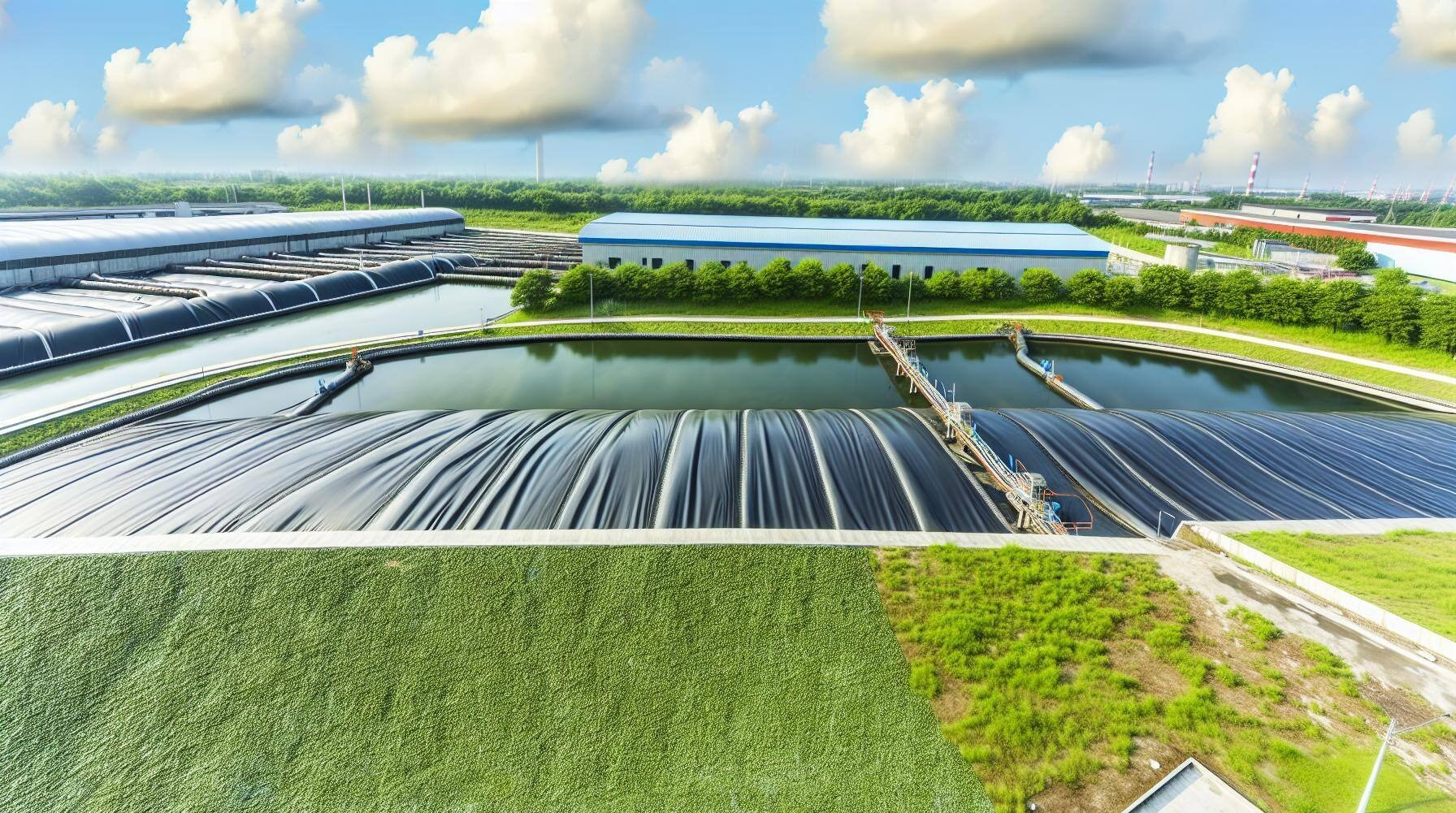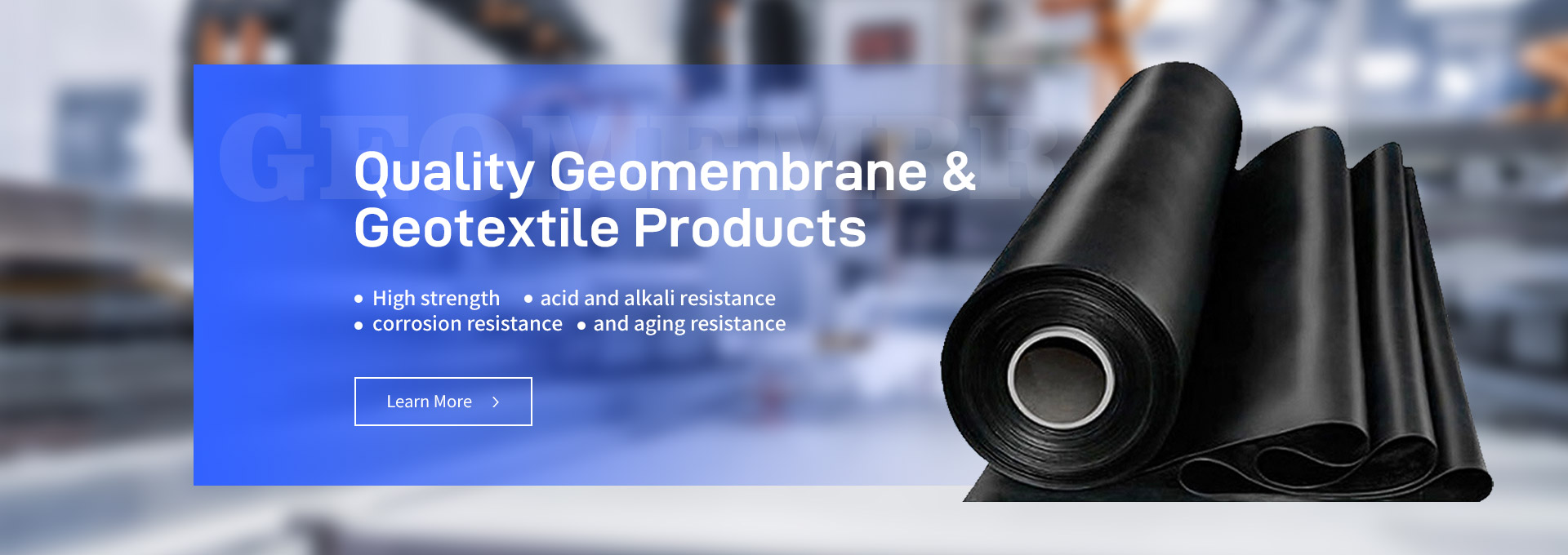Geomembranes are synthetic membranes widely used in various industries for waterproofing and containment purposes. Made from polymers, these materials are designed to provide long-lasting durability and protection against environmental factors such as moisture, chemicals, and soil degradation. As demand for environmentally conscious solutions continues to grow, it is essential to ensure that the geomembranes produced meet both high-quality standards and environmental protection requirements.

The Importance of Quality in Geomembrane Production
Quality control is crucial in the production of geomembranes as they are used in critical applications like landfills, water reservoirs, and mining operations. A poorly manufactured geomembrane can result in failures that may lead to environmental contamination or the compromise of the structural integrity of the containment system. To produce best geomembranes, manufacturers must focus on using high-quality raw materials, employing advanced manufacturing processes, and conducting rigorous testing to meet the specifications required for each application.
One of the most important factors in ensuring high quality is selecting the appropriate material. Geomembranes can be made from various polymers, including polyethylene (HDPE, LLDPE), polypropylene, and PVC. Each material has its own set of properties suited for specific applications. For example, HDPE geomembranes are known for their excellent chemical resistance and high tensile strength, making them ideal for waste containment, while LLDPE offers more flexibility for applications requiring conformability to uneven surfaces. The key is to buy the best geomembranes that are suited to the specific needs of a project, taking into account environmental factors such as temperature, UV exposure, and chemical exposure.
Manufacturing Process and Technology
The manufacturing process of geomembranes is another critical aspect that influences their quality. Modern geomembrane production involves advanced extrusion or calendaring techniques, where the polymer materials are melted and formed into thin, uniform sheets. This process ensures that the geomembrane has a consistent thickness, smooth surface, and no defects that could lead to weaknesses.
To ensure the best geomembranes are produced, manufacturers use state-of-the-art equipment and techniques such as multi-layer extrusion, which improves the mechanical properties of the geomembrane. Additionally, advanced technologies such as infrared sensors are often used to monitor the thickness and uniformity of the product throughout production. This minimizes the risk of inconsistencies that could negatively affect the geomembrane’s performance.
Furthermore, advanced production methods, such as co-extrusion, allow for the creation of geomembranes with layers that have different properties. For instance, a core layer with high chemical resistance can be sandwiched between two layers with better flexibility and UV resistance. This type of multi-layer structure is particularly beneficial in applications where the geomembrane will be exposed to harsh environmental conditions.
Testing and Certification
Before geomembranes are put into use, they must undergo a series of rigorous tests to ensure they meet industry standards for quality and performance. These tests typically include:
1. Tensile Strength and Elongation
The geomembrane must be able to withstand physical stress and stretching without breaking. Tensile strength tests measure how much force the material can endure before rupturing, while elongation tests assess how much it can stretch without losing integrity.
2. Puncture Resistance
Geomembranes used in landfills or other containment applications must be able to resist punctures from sharp objects like rocks or debris. Puncture resistance tests simulate the forces that the geomembrane may experience in real-world conditions.
3. UV Resistance
Geomembranes often face prolonged exposure to sunlight, which can degrade the material over time. UV resistance tests determine how well the material can withstand UV radiation without losing its strength or flexibility.
4. Chemical Resistance
For applications in chemical containment, it is essential to ensure that geomembranes can resist the effects of various chemicals, including acids, oils, and solvents. These tests help determine how the material interacts with different substances.
5. Oxygen and Water Permeability
Testing for permeability ensures that the geomembrane will not allow water, gas, or contaminants to pass through it. This is particularly important in applications such as landfill liners and pond liners.
All geomembranes should meet established standards such as ASTM, ISO, and GRI (Geosynthetic Research Institute) certifications. These certifications indicate that the geomembrane has passed all necessary quality and safety tests, making it suitable for its intended use.
Environmental Considerations
One of the key drivers behind the increasing demand for high-quality geomembranes is their role in environmental protection. Geomembranes are often used for projects that protect groundwater and soil from contamination, such as in landfills, wastewater treatment plants, and mining operations. However, the environmental impact of the production and disposal of geomembranes is also a growing concern.
To ensure that geomembranes contribute to environmental sustainability, manufacturers are focusing on the following strategies:
1. Use of Recycled Materials
Many manufacturers are now incorporating recycled polymers into the production of geomembranes. By using recycled HDPE or other materials, the environmental footprint of producing new geomembranes can be significantly reduced. This practice not only conserves natural resources but also minimizes the amount of plastic waste in landfills.
2. Durability and Longevity
One of the reasons why geomembranes are so widely used is their durability. By producing high-quality geomembranes, manufacturers ensure that these materials have a long service life, reducing the need for frequent replacements. Longer-lasting geomembranes contribute to reducing waste and lowering the overall environmental impact of a project.
3. End-of-Life Recycling
As demand for geomembranes continues to grow, so does the need for responsible disposal methods. Manufacturers are working on developing geomembranes that can be more easily recycled at the end of their service life. This helps to close the loop on the material lifecycle, ensuring that these materials do not contribute to long-term environmental pollution.
4. Compliance with Environmental Standards
Geomembrane manufacturers must adhere to strict environmental regulations and certifications. These standards ensure that the geomembranes produced are safe for use in various environmental applications and do not release harmful substances into the soil or water.
Conclusion
Ensuring the high quality and environmental protection of geomembranes requires a combination of factors, including the use of high-quality materials, advanced manufacturing processes, rigorous testing, and environmental responsibility. By focusing on these aspects, manufacturers can produce geomembranes that not only meet industry standards for performance but also contribute to sustainable and eco-friendly practices.
For those looking to buy the best geomembranes, it is important to choose suppliers that prioritize quality control, certification, and environmental responsibility. By selecting the right geomembrane for the specific needs of a project, businesses can ensure that they are making an investment in both long-term durability and environmental protection.

